What is Face Detection?
Face Detection is a technology that uses computer algorithms to locate and identify human faces in digital images or video footage. The process typically involves analyzing an image or video stream to detect facial landmarks, such as the eyes, nose, and mouth, and then using those landmarks to identify and locate faces.
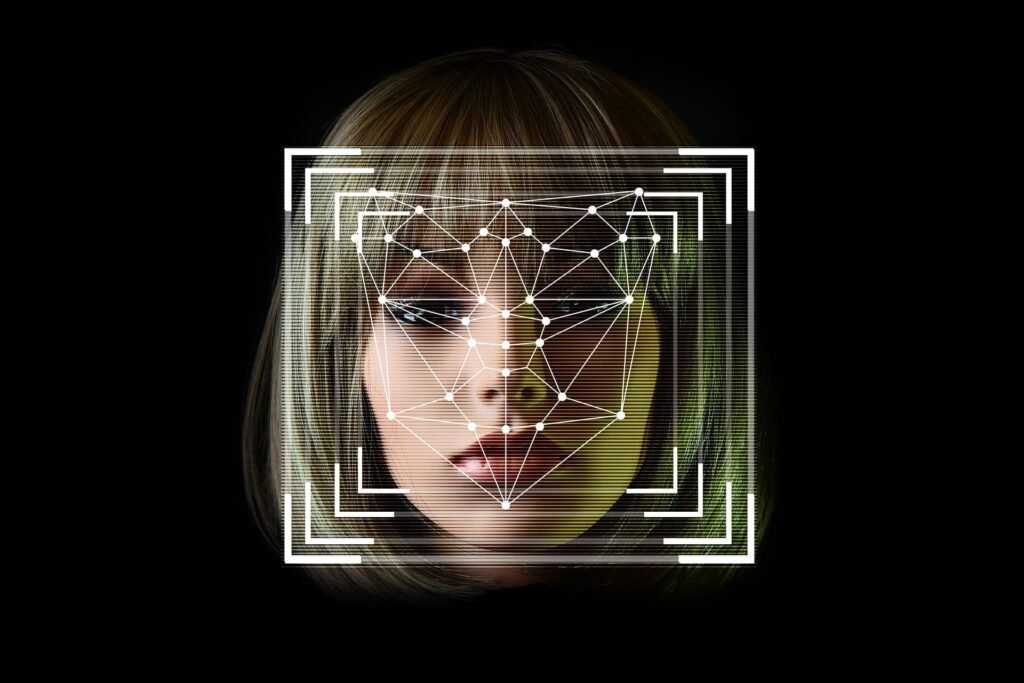
Face detection can be used for a wide range of applications, including security systems, biometric authentication, and digital image and video editing. Some of the popular techniques for face detection are Haar cascades, LBP cascades, HOG features, CNN features and deep learning based methods. The detection can be done by both software and hardware based approaches.
What are the Key capabilities of face detection?
The key capabilities of face detection technology include:
- Locate and identify faces in images or video: The technology can quickly and accurately locate and identify human faces in digital images or video footage.
- Facial landmarks: The technology can detect facial landmarks, such as the eyes, nose, and mouth, which can be used to further identify and track faces.
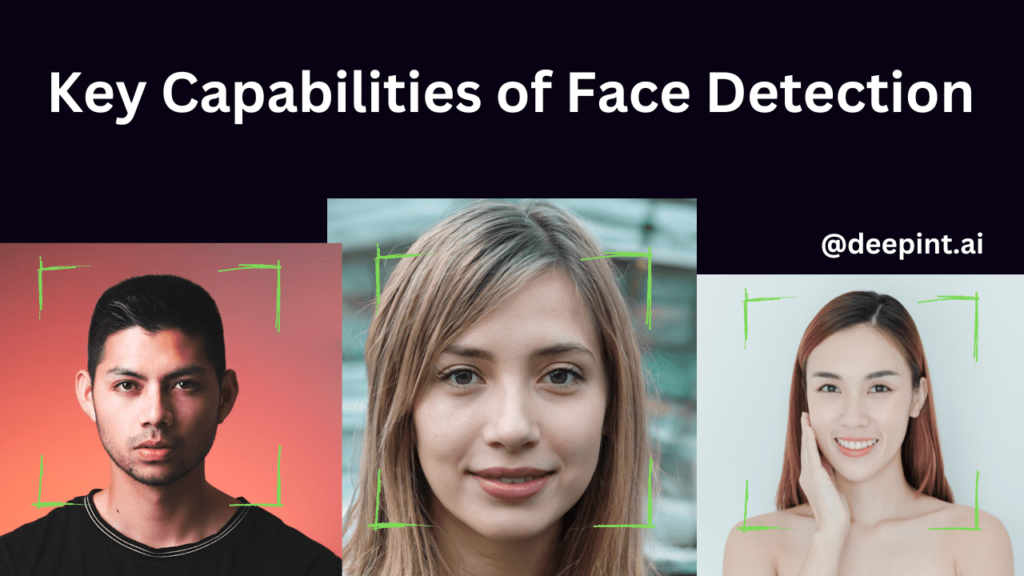
- Real-time processing: Many face detection systems are able to process images or video in real-time, allowing for real-time applications such as security systems and biometric authentication.
- Robustness: Face detection algorithms are designed to be robust to variations in lighting, pose, and expression, making them suitable for use in a wide range of environments.
- Scale-invariant: Face detection algorithms are often scale-invariant, meaning that they can detect faces at different distances and scales without losing accuracy.
- Multi-Face Detection: Some face detection algorithm are designed to detect multiple faces in a single image or video frame.
- Face Recognition: Some advanced face detection algorithm also include the capability of recognizing the detected faces, which makes them suitable for applications such as security, access control, and surveillance.
- Low-power consumption: Some face detection algorithm are designed to work on low-power devices such as smartphones, making them suitable for mobile applications.
How Face Detection Works?
Face detection is a process that uses computer algorithms to locate and identify human faces in digital images or video footage. The process typically involves several steps, which can include:
- Image pre-processing: The first step in face detection is to prepare the image for analysis. This may involve resizing the image, converting it to grayscale, and removing any noise or other artifacts.
- Feature extraction: Next, the algorithm will extract features from the image that are characteristic of a face. This can include the detection of facial landmarks, such as the eyes, nose, and mouth, or the extraction of patterns or textures that are unique to a face.
- Classification: Once the features have been extracted, the algorithm will use a classifier to determine whether or not a face is present in the image. This can involve comparing the extracted features to a set of pre-defined templates or using machine learning to make a prediction.
- Face localization: If a face is detected, the algorithm will then locate the face in the image. This can involve drawing a bounding box around the face or providing the coordinates of the facial landmarks.
- Face recognition: Some advanced face detection algorithms include the capability of recognizing the detected faces, by comparing the detected face with a set of known faces in a database.
Different face detection algorithms use different techniques for each step, for example, some popular techniques for face detection are Haar cascades, LBP cascades, HOG features, CNN features and deep learning based methods.
How can I identify a face in a picture?
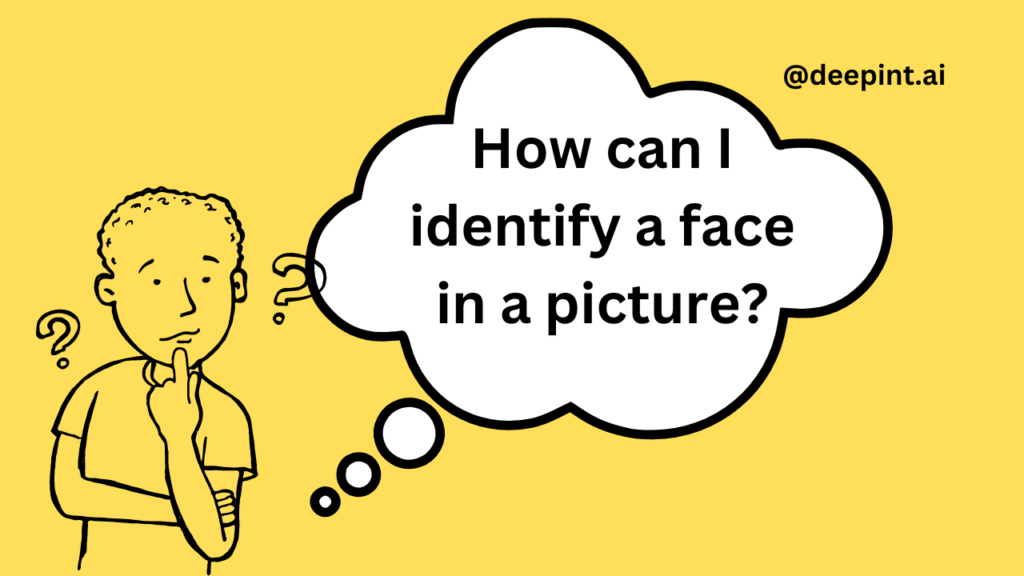
There are several ways to identify a face in a picture, depending on the specific application and the tools available. Some common techniques include:
- Face detection algorithms: Many computer vision libraries, such as OpenCV, provide pre-trained face detection algorithms that can be used to locate and identify faces in images. These algorithms typically use a combination of image processing techniques and machine learning to detect facial landmarks and identify faces.
- Face recognition algorithms: Some advanced face detection algorithms include the capability of recognizing the detected faces, by comparing the detected face with a set of known faces in a database.
- Manually identifying faces: In some cases, it may be necessary to manually identify faces in a picture. This can be done by looking for specific facial features, such as the eyes, nose, and mouth, and comparing them to known images of the person in question.
- Human Review: By using a combination of human and computer-based techniques, it is possible to accurately identify faces in a picture.
It’s important to note that for some applications, such as security, access control and surveillance, it’s important to use face recognition systems that meet the privacy and legal regulations of the country or region.
What are face detection methods?
There are several methods used for face detection, which can be broadly classified into two categories: traditional methods and deep learning-based methods.
Traditional methods include:
- Haar cascades: Haar cascades are based on the idea of using simple features, called Haar features, to detect faces. Haar cascades use a set of simple mathematical functions to analyze the image and detect faces.
- Local Binary Patterns (LBP): LBP cascades use a texture-based approach to detect faces. This method compares the pixel intensity values of an image to its local neighborhood, and the resulting values are used to create a histogram, which is then used to detect faces.
- Histograms of Oriented Gradients (HOG): HOG features use gradient information to detect faces. This method analyses the local changes in the image and creates a histogram of the gradient orientations, which is then used to detect faces.
Deep Learning based methods include:
- Convolutional Neural Networks (CNNs): CNNs are a type of deep learning algorithm that are commonly used for image recognition tasks, including face detection. CNNs use a combination of convolutional layers and pooling layers to analyze images and detect faces.
- Multi-task Cascaded CNNs (MTCNN): Multi-task Cascaded CNNs are a type of CNN that uses multiple networks to detect faces. The MTCNN method uses three cascaded CNNs to detect and align faces.
- Single Shot Multi-box Detector (SSD): SSD is a deep learning-based face detection method that uses a single convolutional neural network to detect faces. The SSD method uses a set of default boxes to detect faces at different scales.
- You Only Look Once (YOLO): YOLO is a deep learning-based face detection method that uses a single convolutional neural network to detect faces. The YOLO method uses a single neural network to predict the bounding boxes and class probabilities for objects in the image.
Each method has its own advantages and disadvantages, and the choice of method depends on the specific application, the available computational resources and the desired accuracy.
What are the uses of Face Detection?
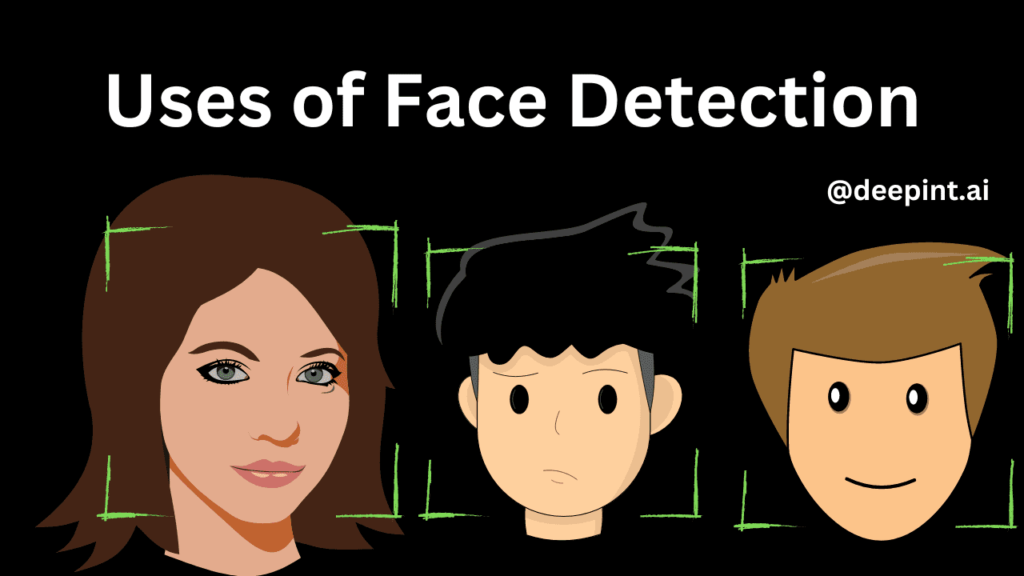
Face detection is a widely used technology in various applications, some examples include:
- Security and surveillance: Face detection is used in security cameras and other surveillance systems to identify and track individuals.
- Access control: Face detection is used in access control systems to verify the identity of individuals before granting them access to a restricted area.
- Human-computer interaction: Face detection is used in human-computer interaction applications, such as facial recognition for unlocking smartphones and tablets or for logging into computers.
- Biometrics: Face detection is also used in biometrics applications, such as passport and ID verification, time and attendance tracking and forensic investigations.
- Robotics: Face detection is used in robotics to enable robots to interact with humans, such as recognizing and tracking people in a room.
- Marketing and advertising: Face detection is used in digital marketing and advertising to track customer engagement and analyze their demographics.
- Retail: Face detection is used in retail to track the number of customers in a store, monitor customer behavior, and analyze foot traffic patterns.
- Photography and videography: Face detection is used in digital cameras and videography equipment to focus on human faces and improve the quality of the picture.
- Social media: Face detection is used in social media to automatically tag people in photos and videos, and also for applying filters and effects to images.
These are just a few examples of the many potential uses of face detection technology, as the field is constantly evolving new applications are being developed.
Which algorithm is used for face detection?
There are several algorithms that are commonly used for face detection, some of the most popular ones include:
- Viola-Jones algorithm: The Viola-Jones algorithm is a traditional method that uses Haar cascades to detect faces. It is based on the idea of using simple features, called Haar features, to detect faces. This algorithm is widely used in real-time face detection systems and has been implemented in various programming languages.
- Local Binary Patterns (LBP): LBP is a traditional method that uses a texture-based approach to detect faces. This algorithm compares the pixel intensity values of an image to its local neighborhood, and the resulting values are used to create a histogram, which is then used to detect faces.
- Deep Learning-based algorithms: One of the most popular deep learning-based algorithms for face detection is Multi-task Cascaded CNNs (MTCNN) that uses multiple networks to detect faces. Another popular deep learning-based algorithm is Single Shot Multi-box Detector (SSD) that uses a single convolutional neural network to detect faces.
- You Only Look Once (YOLO): YOLO is a deep learning-based face detection method that uses a single convolutional neural network to detect faces. The YOLO method uses a single neural network to predict the bounding boxes and class probabilities for objects in the image.
In recent years, deep learning-based algorithms have shown to be more effective than traditional algorithms in detecting faces in complex images and in real-time scenarios. However, traditional methods like Viola-Jones and LBP still have their own advantages, such as being less computationally intensive and more efficient for certain types of images.
What is CNN face detection?
CNN (Convolutional Neural Network) face detection is a method of detecting faces in images or videos using a deep learning algorithm. CNNs are a type of neural network that are particularly well-suited for image recognition tasks.
In CNN-based face detection, a CNN model is trained on a large dataset of images that contain faces and non-faces. The model learns to recognize patterns in the images that correspond to faces, and it can then be used to detect faces in new images.
One of the most popular CNN-based face detection methods is Multi-task Cascaded CNNs (MTCNN) which uses three cascaded sub-networks to detect faces. The first network, called the P-Net, detects candidate windows that may contain faces. The second network, called the R-Net, refines the candidate windows and eliminates the false positives. The last network, called the O-Net, detects the facial landmarks and attributes such as face orientation, facial expressions and age, etc.
Another popular CNN-based face detection method is Single Shot Multi-box Detector (SSD) that uses a single convolutional neural network to detect faces. The SSD method uses a single neural network to predict the bounding boxes and class probabilities for objects in the image.
CNN-based face detection methods are typically more accurate and robust than traditional methods, such as the Viola-Jones algorithm, but they also require more computational power and training data.
How CNN is used in face detection?
CNN (Convolutional Neural Network) is used in face detection by training a CNN model on a dataset of images that contain faces and non-faces. The trained model can then be used to detect faces in new images.
The process of using a CNN for face detection typically involves the following steps:
- Data collection and preparation: A large dataset of images that contains a diverse set of faces is collected and labeled as “face” or “non-face” images.
- Model Training: The CNN model is trained on the dataset using a supervised learning approach. During training, the model learns to recognize patterns in the images that correspond to faces.
- Model Validation: The trained model is then evaluated on a validation dataset to ensure that it is able to detect faces accurately and robustly.
- Face Detection: Once the model is trained, it can be used to detect faces in new images. The CNN model processes the new image, and outputs the locations of the faces in the image.
There are several popular CNN-based face detection methods such as Multi-task Cascaded CNNs (MTCNN) and Single Shot Multi-box Detector (SSD) etc.
In Multi-task Cascaded CNNs (MTCNN) method, three cascaded sub-networks are used to detect faces. The first network, called the P-Net, detects candidate windows that may contain faces. The second network, called the R-Net, refines the candidate windows and eliminates the false positives. The last network, called the O-Net, detects the facial landmarks and attributes such as face orientation, facial expressions and age, etc.
In Single Shot Multi-box Detector (SSD) method, a single convolutional neural network is used to detect faces. The SSD method uses a single neural network to predict the bounding boxes and class probabilities for objects in the image.
CNN-based face detection methods are typically more accurate and robust than traditional methods, such as the Viola-Jones algorithm, but they also require more computational power and training data.
What are the advantages of face detection?
There are several advantages of face detection, including:
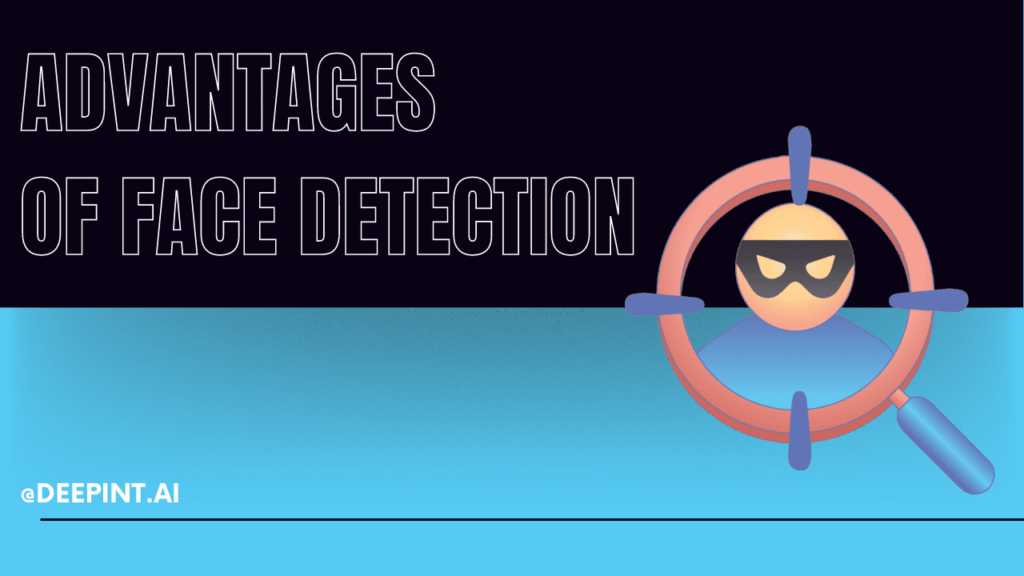
- Automation: Face detection allows for the automation of tasks that would otherwise require manual effort, such as counting the number of people in a crowd or identifying individuals in security footage.
- Security: Face detection can be used in security applications, such as identification and access control, to ensure that only authorized individuals are granted access to restricted areas.
- Surveillance: Face detection can be used in surveillance systems to detect and track individuals in real-time.
- Marketing: Face detection can be used to gather data on customer behavior, such as how long they spend looking at a particular product or how many people viewed an advertisement.
- Personalization: Face detection can be used to personalize experiences for users, such as recommending content or products based on their facial expressions or preferences.
- Biometrics: Face detection can be used as a biometric identifier, providing a unique and secure way of identifying individuals.
- Cost-effective: With the advancement of technology, face detection has become a cost-effective solution as compared to traditional methods.
- Speed: Face detection can process images and videos at a very high speed, making it suitable for real-time applications.
- Accessibility: Face detection can be integrated into a wide range of devices and platforms, making it accessible to a wide range of users and applications.
These are some of the advantages of face detection, but depending on the specific use case, there might be other advantages as well.
What are the Disadvantages of face detection?
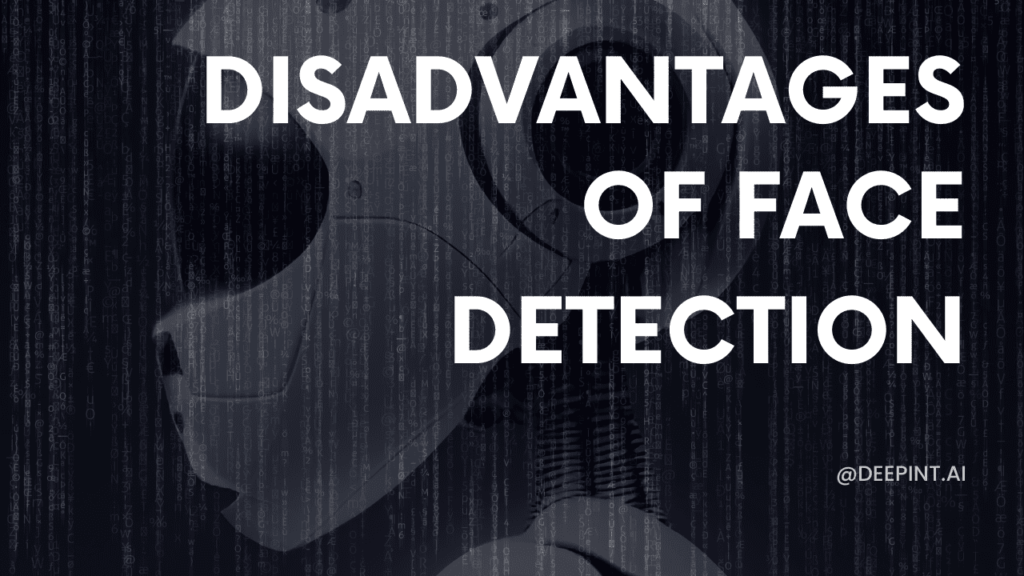
There are several disadvantages of face detection, including:
- Privacy concerns: The use of face detection technology raises concerns about privacy and the potential for misuse of personal data.
- False positives: Face detection algorithms may produce false positives, incorrectly identifying a face where none exists.
- False negatives: Face detection algorithms may produce false negatives, failing to identify a face that is present in the image.
- Limited accuracy: Face detection algorithms can be affected by lighting, angles, and other factors, which can limit their accuracy.
- Bias: Face detection algorithms can be biased, performing better for certain demographic groups than others.
- Complexity: The implementation of face detection technology can be complex and require specialized knowledge and resources.
- Limited in dark or low light: Face detection can be limited in dark or low light conditions.
- Limited to still images: Face detection is limited to still images and videos, it might not be useful in identifying faces in live scenarios.
- Limited to frontal faces: Most of the face detection algorithms are trained on frontal faces, it might not be able to detect faces at different angles.
- Limited to specific ethnicities: Some face detection algorithms have been found to have limited accuracy in detecting faces of certain ethnicities.
These are some of the disadvantages of face detection, but depending on the specific use case, there might be other disadvantages as well. It’s also worth noting that technology is continuously evolving, and there are ongoing efforts to improve the accuracy and fairness of face detection algorithms.
Face Detection VS Facial Recognition
Face detection and facial recognition are related but distinct technologies.
Face detection is the process of identifying and locating faces in images or videos. It can be used to count the number of people in a crowd, track individuals in security footage, or detect faces in photographs for tagging or other purposes.
Facial recognition, on the other hand, is the process of identifying or verifying a person’s identity based on their facial features. It can be used for applications such as identification and access control, surveillance, and biometrics.
One key difference between the two is that face detection only identifies the presence of a face in an image, while facial recognition attempts to match a detected face to a database of known faces in order to identify the person.
Another difference is that face detection is usually a simpler and less computationally intensive task than facial recognition. Face detection algorithms focus on finding the face in an image, while facial recognition algorithms focus on identifying the specific person.
In summary, Face detection is a technology that detects faces in images or videos, while facial recognition is a technology that uses face detection to identify or verify a person’s identity. They are related but distinct technologies with different use cases and implications.
Why Python is used in face detection?
Python is a popular programming language for many reasons, but one of the main reasons it is used in face detection is because of its ease of use and readability. The syntax of Python is simple and easy to understand, making it a great choice for beginners and experts alike. Additionally, Python has a large number of libraries and frameworks that make it easy to implement face detection algorithms.
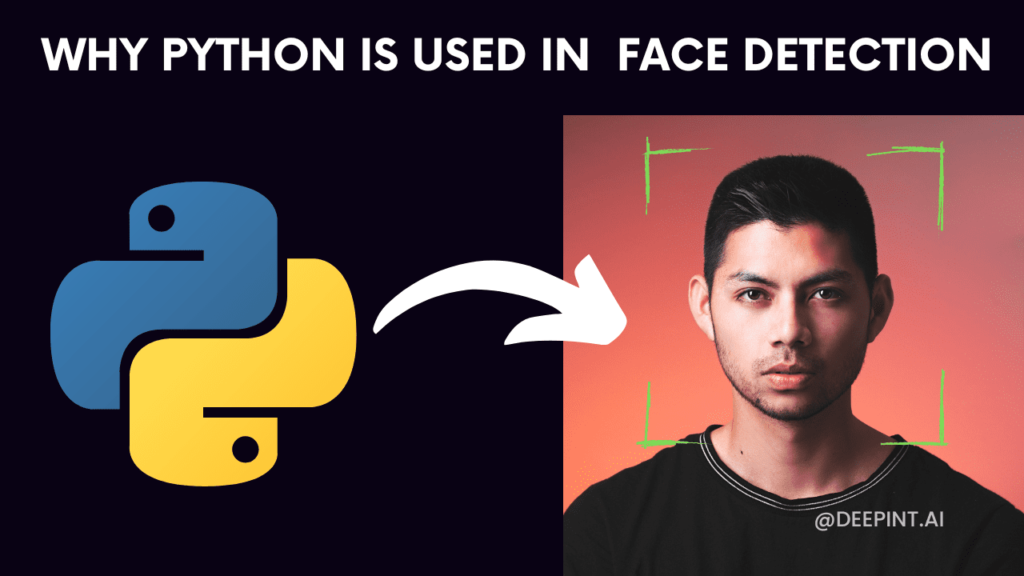
Another reason why Python is used in face detection is the availability of powerful libraries such as OpenCV. OpenCV is an open-source computer vision library that provides a wide range of image processing and computer vision algorithms. It has a built-in module for face detection, which allows developers to easily implement and test face detection algorithms.
Python also has a large community of developers who are constantly working on improving and expanding the language’s capabilities. This means that there are a wide range of tutorials, sample code, and other resources available for those looking to implement face detection in Python.
Finally, Python is also a platform-independent language, which means that code written in Python can be run on multiple platforms without modification. This allows developers to use the same codebase for face detection in different operating systems and environments.
In short, Python is popularly used in face detection due to its ease of use, readability, powerful libraries, large community, and platform-independence.
What is face detection API?
A face detection API is an application programming interface (API) that allows developers to add face detection functionality to their own applications. An API is a set of protocols, routines, and tools for building software and applications.
APIs for face detection typically provide a way for developers to send images or video to the API, and then receive information about the faces detected in the images or video. This information can include the location of the faces within the image, the size and shape of the faces, and other attributes such as facial expressions or landmarks.
APIs for face detection are typically cloud-based, which means that the processing is done on servers in the cloud, rather than on the device that the application is running on. This allows developers to easily add face detection functionality to their applications without the need for specialized hardware or infrastructure.
APIs for face detection are available from several vendors, including Microsoft, Google, and Amazon. They are usually available on a pay-per-use or subscription basis, and may have usage limits or pricing tiers based on the volume of requests made.
In summary, A face detection API is a tool that allows developers to add face detection functionality to their own applications. It’s a set of protocols and routines that developers can use to send images or video to the API, and then receive information about the faces detected in the images or video. These APIs are usually cloud-based, and available from several vendors on pay-per-use or subscription basis.
My Conclusion
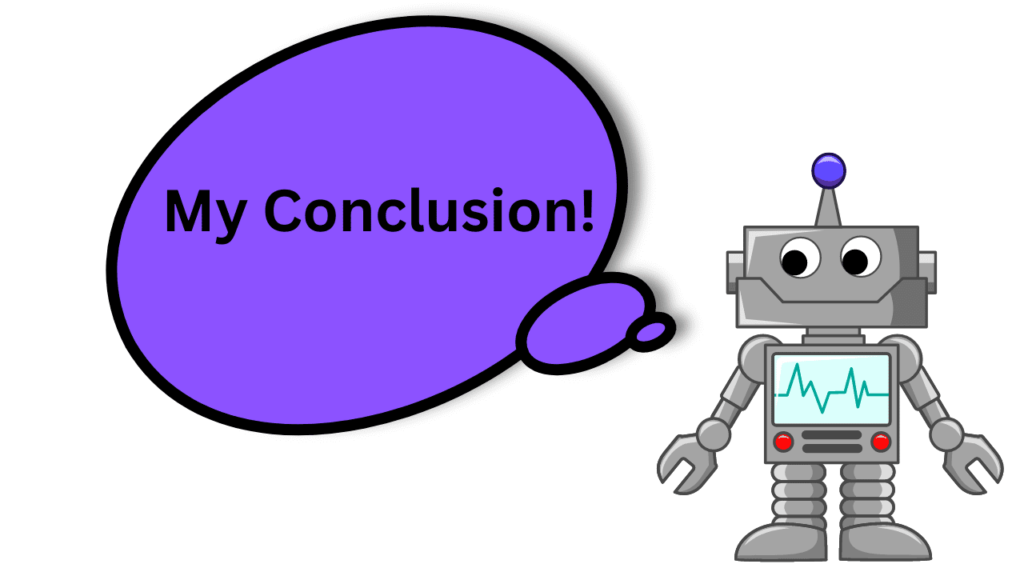
So, After understanding everything about face detection I would like to conclude that face detection technology is a powerful tool that has a wide range of applications in various fields such as security, surveillance, biometrics, and image processing. The use of this technology makes it possible to detect and locate faces in images and videos, which can be used to track individuals, count the number of people in a crowd, and detect faces in photographs for tagging or other purposes.
The use of face detection technology is becoming increasingly popular due to the availability of powerful libraries and frameworks like OpenCV and the ease of use of programming languages such as Python. Additionally, the use of cloud-based APIs for face detection has made it easy for developers to add face detection functionality to their own applications without the need for specialized hardware or infrastructure.
However, it is important to note that the use of face detection technology also raises important ethical and privacy concerns, as it can be used for mass surveillance and the collection of personal data. It is essential for organizations and individuals to consider these issues and implement appropriate safeguards and regulations to protect personal privacy and civil rights.
Overall, face detection technology is a powerful and versatile tool that has many practical applications, but it is important to use it responsibly and with consideration of its potential impact on privacy and civil rights.

